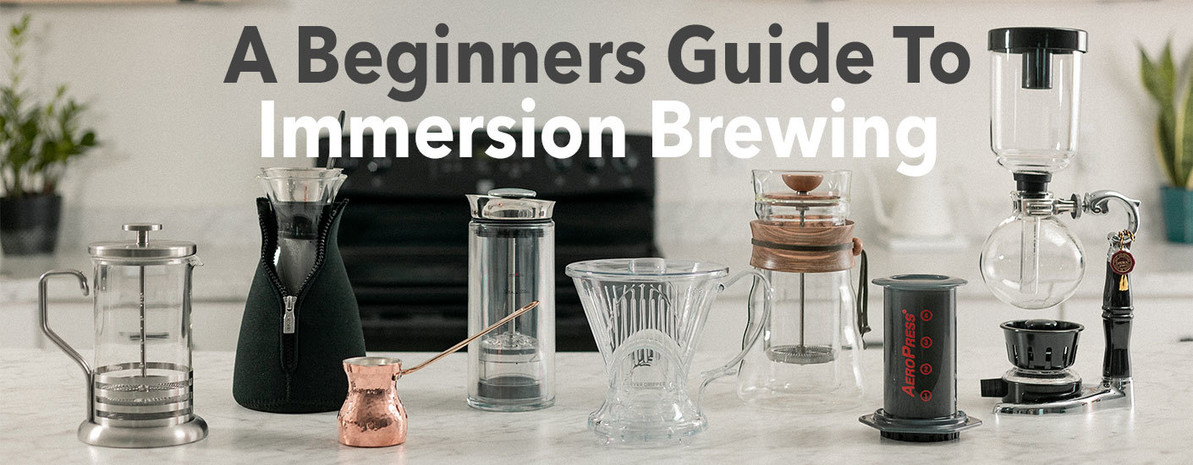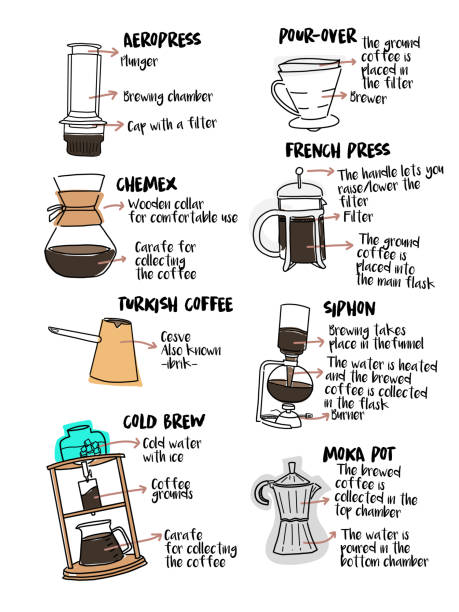Coffee Brewing Methods Debunked: From French Press to Cold Brew
Wiki Article
Exploring the Art of Coffee Developing: A Comprehensive Overview to Perfecting Your Mug
The art of coffee developing is a diverse self-control that combines science with personal expression, where the option of beans, water top quality, and brewing approaches converge to create a refined sensory experience. Understanding the subtleties of various coffee beans, especially the differences in between Arabica and Robusta, is important for any enthusiast. Moreover, the option of appropriate equipment and precise focus to brewing parameters can substantially affect the final end result. As we explore these elements, one must consider how even minor changes can result in profound changes in flavor and aroma-- what might these adjustments disclose regarding your suitable mug?Recognizing Coffee Beans
To absolutely appreciate the art of coffee developing, one have to initially comprehend the foundational element: coffee beans. These small seeds, usually stemmed from the Coffea plant, are essential in determining the taste account, scent, and overall top quality of the made beverage. Coffee beans mostly fall right into 2 categories: Arabica and Robusta. Arabica beans, recognized for their fragile flavors and greater acidity, are frequently favored by connoisseurs. In comparison, Robusta beans possess a more powerful, a lot more bitter preference and higher high levels of caffeine content, making them ideal for espresso blends.
In addition, the handling approach-- whether washed, natural, or honey-- impacts the beans' last taste. Understanding these elements enables makers to choose the ideal beans that straighten with their favored taste profile, ultimately boosting the coffee developing experience. coffee brewing methods. This understanding is important for any individual desiring understand the craft of brewing the ideal mug of coffee
Developing Techniques Clarified
Several lovers discover that the option of brewing technique substantially influences the final flavor and aroma of their coffee. Each method utilizes different removal techniques, influencing the coffee's character and richness.Drip developing, among one of the most popular methods, uses a machine to drip warm water via ground coffee, producing a regular and tidy mug. French press, on the other hand, submerses coffee premises in hot water, permitting a fuller body and more robust taste, as oils and fine bits remain in the mixture.
Pour-over brewing provides a precise approach, where water is by hand put over coffee grounds, permitting specific control over removal time and temperature, resulting in a intense and nuanced mug.
Coffee, a concentrated coffee made under stress, is known for its strong flavor and luscious appearance, functioning as the base for various coffee beverages, consisting of lattes and coffees.
Crucial Tools Required
What devices is Discover More important for making a wonderful cup of coffee? The foundation of any effective coffee brewing procedure hinges on high quality devices tailored to your favored method. To start with, a trusted coffee mill is critical; newly ground beans significantly improve flavor and scent. Go with a burr mill, which guarantees consistent fragment dimension, essential for ideal removal.Next, consider your brewing gadget. Alternatives vary from drip coffee machine and pour-over configurations to French presses and coffee machines. Each method uses unique flavor accounts and brewing techniques, so select one that aligns with your preference preferences.
A specific range is also invaluable, permitting you to gauge coffee and water properly, which is vital for consistency. Furthermore, a thermostat can help monitor water temperature, as it directly influences extraction quality.
Learning Water Top Quality
The quality of water used in developing coffee plays a considerable function in identifying the final flavor account of the mug. Different elements add to water high quality, including mineral content, pH degree, and general purity. Ideally, water ought to be devoid of impurities and impurities, as these can adversely affect the taste of coffee.
Minerals, such as calcium and magnesium, boost the removal of flavors from the coffee grounds, while keeping a balanced pH level-- around 6.5 to 7.5-- is crucial for optimal removal. Water that is too soft might cause under-extraction, resulting in weak or sour flavors, while excessively hard water can generate a bitter or extreme cup.
For the very best outcomes, filtered water is suggested, as it lowers the presence of chlorine and various other here unfavorable substances frequently located in faucet water. Furthermore, consider making use of water with an Overall Dissolved Solids (TDS) degree between 150-200 ppm, which is generally perfect for coffee brewing. By mastering water top quality, you can lay a solid structure for achieving a continually superb cup of coffee, permitting the unique features of your chosen beans to beam through.

Tips for Flavor Improvement
Enhancing the taste of your coffee can dramatically elevate your brewing experience and highlight the unique nuances of your selected beans. To attain this, consider a number of vital factors that influence preference.To start with, the grind size plays a crucial function. A finer work raises extraction, resulting in bolder tastes, while a coarser work returns a milder mug. coffee brewing methods. Adjust your grind according to your developing approach to attain optimal results
Second of all, experiment with brew time. Over-extraction can cause anger, while under-extraction results in a sour taste. Goal for a mixture time that stabilizes these extremes, generally between 2 to view it now 4 minutes, relying on your method.
In addition, temperature is a critical aspect. Brewing with water that is as well hot can blister the coffee, while water that is too cool might fall short to draw out ample flavor. The ideal temperature level range is 195 ° F to 205 ° F(90 ° C to 96 ° C)
Final Thought) )))) In final thought, the art of coffee developing is a multifaceted method that calls for a deep understanding of numerous elements, consisting of bean choice, brewing techniques, and water high quality. Mastery of vital devices and focus to information in work dimension, brew time, and temperature are important for accomplishing ideal removal. By incorporating these elements, coffee lovers can elevate their brewing strategies, causing a mug that not only satisfies personal choices yet additionally showcases the abundant complexity of coffee tastes.
The art of coffee brewing is a complex self-control that combines science with individual expression, where the option of beans, water quality, and brewing techniques converge to produce a polished sensory experience.To really value the art of coffee brewing, one need to initially understand the foundational component: coffee beans. Brewing with water that is as well warm can burn the coffee, while water that is also amazing may fall short to extract appropriate taste. In conclusion, the art of coffee developing is a complex practice that requires a deep understanding of various aspects, consisting of bean option, brewing techniques, and water top quality. By incorporating these components, coffee enthusiasts can boost their brewing methods, resulting in a mug that not just satisfies personal preferences yet likewise showcases the rich complexity of coffee flavors.Report this wiki page